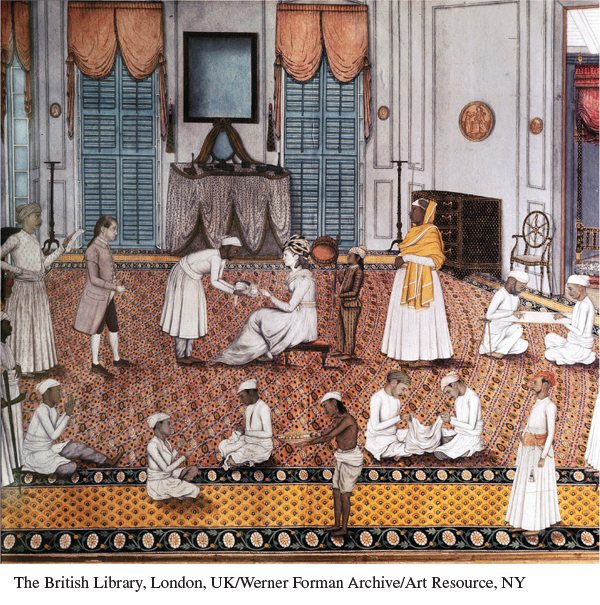A History of Western Society: Printed Page 569
A History of Western Society, Value Edition: Printed Page 548
A History of Western Society, Concise Edition: Printed Page 570
Trade and Empire in Asia and the Pacific
As the Atlantic economy took shape, Europeans continued to vie for dominance in the Asian trade. Between 1500 and 1600 the Portuguese had become major players in the Indian Ocean trading world, eliminating Venice as Europe’s chief supplier of spices and other Asian luxury goods. The Portuguese dominated but did not fundamentally alter the age-
Formed in 1602, the Dutch East India Company had taken control of the Portuguese spice trade in the Indian Ocean, with the port of Batavia (Jakarta) in Java as its center of operations. Within a few decades they had expelled the Portuguese from Ceylon and other East Indian islands. Unlike the Portuguese, the Dutch transformed the Indian Ocean trading world. Whereas East Indian states and peoples maintained independence under the Portuguese, who treated them as autonomous business partners, the Dutch established outright control and reduced them to dependents.
After these successes, the Dutch hold in Asia faltered in the eighteenth century due to the company’s failure to diversify to meet changing consumption patterns. Spices continued to compose much of its shipping, despite their declining importance in the European diet, probably due to changing fashions in food and luxury consumption. Fierce competition from its main rival, the English East India Company (established 1600), also severely undercut Dutch trade.
Britain initially struggled for a foothold in Asia. With the Dutch monopolizing the Indian Ocean, the British turned to India, the source of lucrative trade in silks, textiles, and pepper. Throughout the seventeenth century the English East India Company relied on trade concessions from the powerful Mughal emperor, who granted only piecemeal access to the subcontinent. Finally, in 1716 the Mughals conceded empire-


Britain’s great rival for influence in India was France. During the War of the Austrian Succession, British and French forces in India supported opposing rulers in local power struggles. In 1757 East India Company forces under Robert Clive conquered the rich northeastern province of Bengal at the Battle of Plassey. French-
The late eighteenth century also witnessed the beginning of British settlement of the continent of Australia. The continent was first sighted by Europeans in the early seventeenth century, and thereafter parts of the coast were charted by European ships. Captain James Cook claimed the east coast of Australia for England in 1770, naming it New South Wales. The first colony was established there in the late 1780s, relying on the labor of convicted prisoners forcibly transported from Britain. Settlement of the western portion of the continent followed in the 1790s. The first colonies struggled for survival and, after an initial period of friendly relations, soon aroused the hostility and resistance of aboriginal peoples. Cook himself was killed by islanders in Hawaii in 1779, having charted much of the Pacific Ocean for the first time.
The rising economic and political power of Europeans in this period drew on the connections they established between the Asian and Atlantic trade worlds. An outstanding example is the trade in cowrie shells. These seashells, originating in the Maldive Islands in the Indian Ocean, were used as a form of currency in West Africa. European traders obtained them in Asia, packing them alongside porcelains, spices, and silks for the journey home. The cowries were then brought from European ports to the West African coast to be traded for slaves. Indian textiles were also prized in Africa and played a similar role in exchange. Thus the trade of the Atlantic was inseparable from Asian commerce, and Europeans were increasingly found dominating commerce in both worlds.